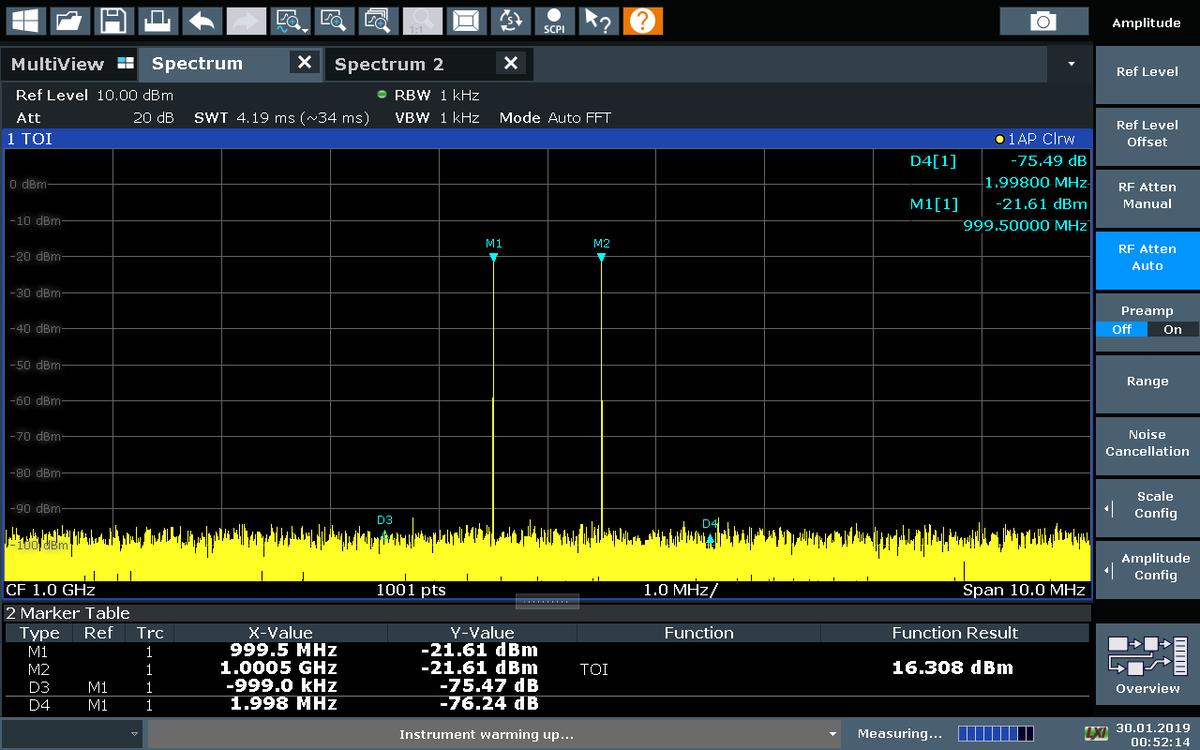Flaws in audio systems – loudness at intermodulation distortion limit
Flaws in audio systems – loudness at intermodulation distortion limit
Theory explanation 
Impact on listening 
What can I do? When … an audio system 
Theory explanation 
Explanation of TestHiFi’s measurement output data and the theory about the TestHiFi criteria.
Measurement data explanation:
TestHiFi measures in three positions average, to limit room influences. It measures standard industry criteria. The measurement data shows you detailed identified weaknesses of the tested system, if any.
The intermodulation distortion related criteria results indicate accumulated level of distortions, consisting of harmonic, sub-harmonic and intermodulation distortions, inappropriately high compared to level of multiple low respectively high frequency test tones.
Critical systems reproduce lower frequencies (such as base, drums, low voices) respectively higher frequencies (such as violins, guitars, flutes), in a manner very inarticulate, opaque, and without contour; in worst cases, the artificial noise exceeds the recorded sound.
Intermodulation distortion levels for lower, respectively higher multi frequency test tones are indicated in % relative to their multi test tone amplitude average.
Theory:
Flaws in audio systems – loudness at intermodulation distortion limit
Accumulated level of all distortions compared to level of multiple low respectively high frequency test tones.
Critical are systems that cannot generate a minimum multi frequency test tone level within acceptable distortion limits
Good or natural harmonic distortion
All tones we hear consist of a fundamental frequency and additional harmonic frequencies. A violin and a flute do not sound the same, even when they play the same note equally loudly. The difference in their instrumental typical sound characteristic arises from the fact that every note on any musical instrument consists of not just one frequency, but a combination of the fundamental and its overtones, its harmonics. Therefore harmonics are an inevitably and good thing. A fundamental frequency of 100Hz, played by a bass instrument, comes with its 2nd harmonic frequency of 200Hz, 3rd of 300Hz, 4th of 400 Hz and so on, its always a simple multiple. Those harmonics are fare less loud than the fundamental and their loudness further decreases from lower to upper harmonics.
In some cases artists use purposely harmonic distortion to create special sounds. Rock guitars are most famous for this special and extensive distortion sounds.
Intermodulation distortion
IMD is the amplitude modulation of multi tone/frequency signals, caused by nonlinearities or time variance in a system. The intermodulation between frequency components will form additional frequencies like harmonic distortion and also many more additional frequencies.
Intermodulation is caused by non-linear behavior of the audio system. Practically all audio equipment has some non-linearity, so it will exhibit some amount of IMD, which however may be low enough to be imperceptible by humans. Humans perceive the same percentage of IMD as more bothersome compared to the same amount of harmonic distortion.

By Ice Ardor – I measured the intermodulation characteristics of an amplifier myself on a spectrum analyzer, CC BY-SA 4.0, Link
IMD is only distinct from harmonic distortion in that the stimulus signal is different. The same nonlinear system will produce both total harmonic distortion (with a solitary sine wave input) and IMD (with more complex tones). In music, for instance, IMD is intentionally applied to electric guitars using overdriven amplifiers or effects pedals to produce new tones at subharmonics of the tones being played on the instrument.
Slew-induced distortion (SID) can produce intermodulation distortion (IMD) when the first signal is slewing (changing voltage) at the limit of the amplifier’s power bandwidth product. This induces an effective reduction in gain, partially amplitude-modulating the second signal. If SID only occurs for a portion of the signal, it is called “transient” intermodulation distortion.
Bad distortions?
Many instruments, if played louder, increase the level of lower harmonics (2nd, 3rd, 4th, 5th) more than the fundamental. So does the air itself, and our hearing. Therefore we are less sensitive to those lower order harmonics than high order ones (6th and higher), at rising levels.
Problem is: audio devices also produce very high order harmonics if stressed, and dis-harmonic frequencies (frequencies which are not harmonics of the fundamental tone). These may sound annoying to our ears, and are to some part measured as „intermodulation distortion“ (IMD). The more instruments are recorded, the more complex their frequency spectrum produced. This kind of intermodulation interferes with the IMD of technical devices.
Loudness at intermodulation distortion limit
Some audio systems add distortion to the sound by themselves, which sounds very odd and can dramatically alter the sound of the input music. Those are bad, not tolerable distortion.
Impact on listening 
Systems with high LF or HF IMD reproduce lower frequencies (such as base, drums, low voices) or higher frequencies (such as violins, guitars, flutes) inarticulate, opaque, and without contour; in worst cases, the artificial noise exceeds the recorded sound.
Some audio systems add lots of IMD, up to an annoying level.
It sounds like a curtain of noise is modulated by the sound level. A curtain between the listener and the musician that can be more or less transparent, depending on the amount of IMD. Thereby masking the beauty of individual instrument’s sounds. Such curtain allows for listening to the music and one would realize mostly when the curtain is taken away, how clear the sound can be.
Another description might be the air between the tones. Instruments and vocals might sound closer, kind of compressed, less space or room between them. As such, IMD have a significant influence on the beauty of sound. It compares a bid to watching a football match on a full HD display versus to watching on a 4k display.
What can I do? When … an audio system 
What can I do when either buying, setting up or listening to an audio system?
… buying …
This is an utmost important criteria when buying a system. A system that artificially adds distortion at listening levels, will continue to do so. The type of flaw is severe and very difficult if not impossible to fix.
Know what distortion sounds like before you buy a system. Specification details might not prevent you from being mislead. They are hardly to understand and have to be read and understood in context.
Listen, for instance to music with distorted rock guitars, to learn how distortion sound like. Listen to some deep frequencies played on a rather small speaker. Observe how those frequencies become more muddy and hum when carefully increasing the loudness. Before buying a sound system compare the sound to a rather better one. Just to be sure that the one you want to buy does not sound much more muddy or less detailed, especially in the bass region.
Distortion levels, also for individual lower frequencies at higher levels, should stay clearly below 5%.
… setting up …
If the system adds lots of distortion at listening levels, there is not much you can do about it. Some overstrained systems add lots of distortions. This holds true for every component in the whole audio system. Make sure non of the components of your system with independent volume-control is overstrained.
… listening to …
If the system adds lots of distortion at listening levels, there is not much you can do about it. It might help, to listen at lower levels. That might prevent overtraining the system.